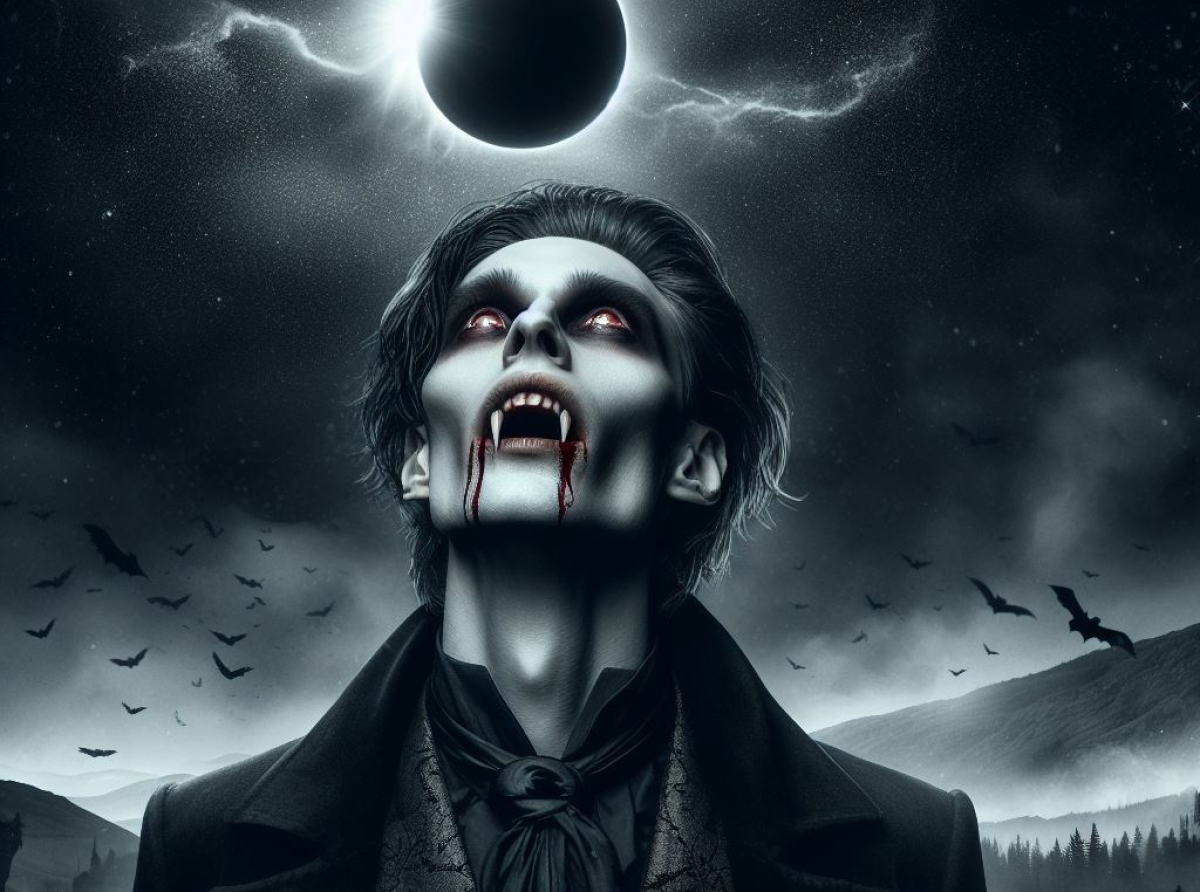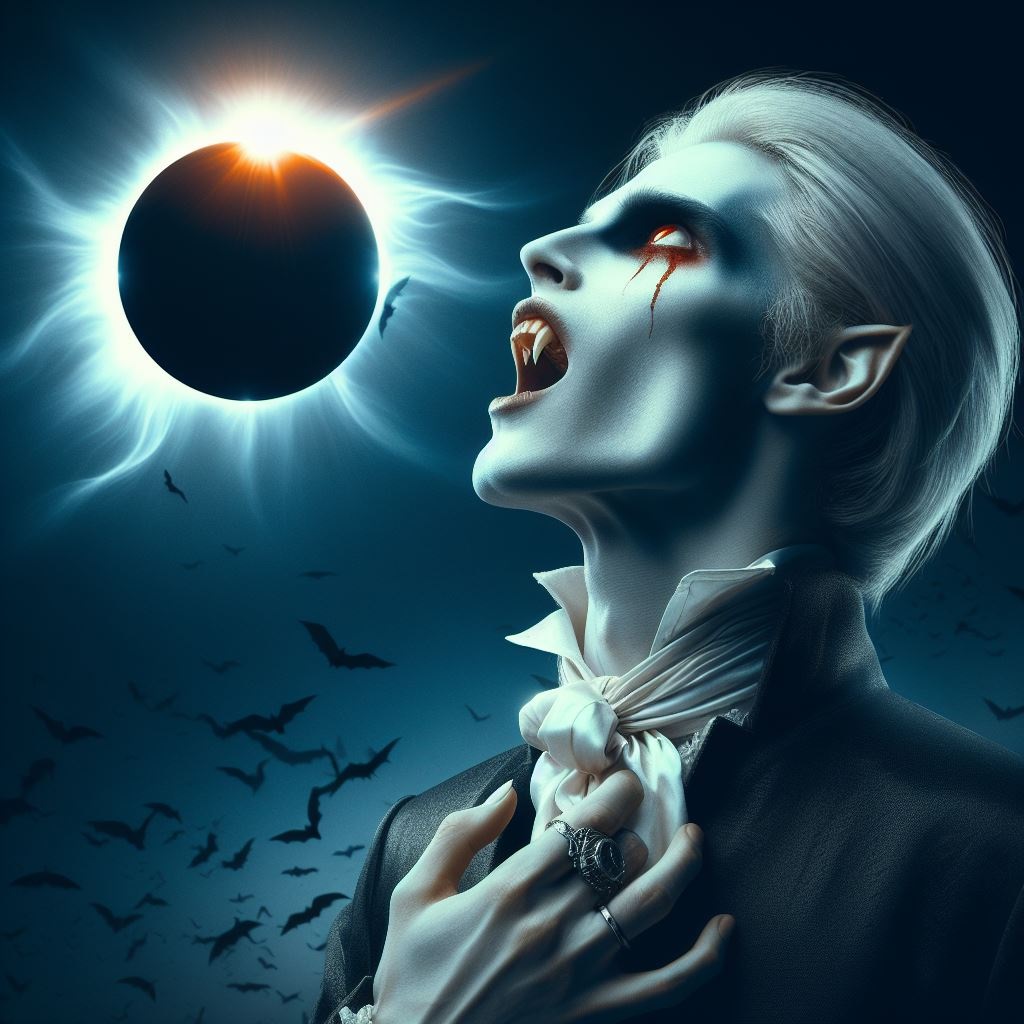Becoming a Magnetic Reverse Vampire Or Something
Introduction
April 8, 2024
Ancient Astronaut theorists claim staring at a Solar Eclipse like the one tomorrow will cause you turn into a reverse vampire or something. We don't know. But here is what the
internet has to say.
-
Frequency: There are about two to five solar eclipses each year. They’re like the celestial rock concerts of the sky—rare but memorable1.
-
Speed Demon: The Moon travels in front of the Sun at approximately 1,398 miles per hour (2,250 kilometers per hour). It’s like the Moon’s version of a cosmic racecar1.
-
Polar Exclusion: There is never a total solar eclipse at the north and south poles. Apparently, polar bears and penguins aren’t fans of cosmic shadow play1.
-
Duration: A typical total solar eclipse lasts about 7 minutes and 30 seconds. That’s your window to experience daytime darkness and cosmic awe1.
-
Alignment Dance: Solar eclipses occur when the Sun, the Moon, and Earth align (or get into syzygy, as astronomers say). The Moon casts its shadow on our planet, creating this celestial spectacle2.
-
New Moon Magic: Solar eclipses only happen during the New Moon phase. It’s like the Moon’s way of saying, "Hey, let’s throw some shade!"2.
-
Orbit Tilt: The Moon’s orbit is tilted about 5 degrees compared to Earth’s orbit around the Sun. These orbital intersections (called nodes) determine when eclipses occur. It’s like celestial choreography2.
-
Varying Totalities: The total phases of solar eclipses vary in time because Earth’s distance from the Sun and the Moon’s distance from Earth change. The Moon’s apparent diameter can range from 10 percent smaller to 7 percent larger than the Sun’s, leading to different eclipse durations2.
-
Magnitude and Obscuration: Astronomers categorize solar eclipses based on their magnitude (the percent of the Sun’s diameter covered by the Moon) and obscuration (the percent of the Sun’s total surface area covered). It’s like eclipse math, and it’s fascinating stuff


